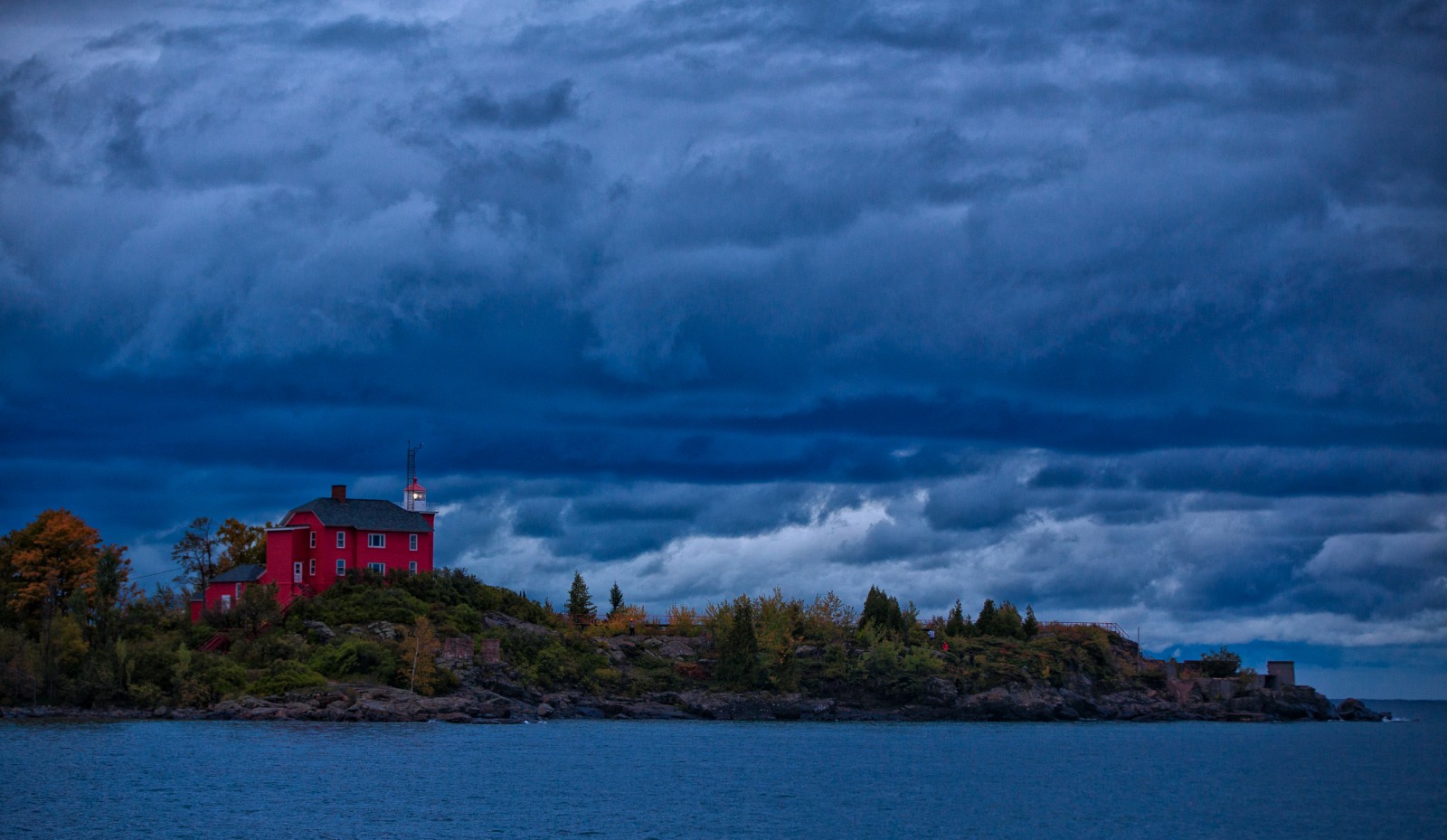
By Keith Schneider, Circle of Blue
The Great Lakes News Collaborative includes Bridge Michigan; Circle of Blue; Great Lakes Now at Detroit Public Television; and Michigan Radio, Michigan’s NPR News Leader; who work together to bring audiences news and information about the impact of climate change, pollution, and aging infrastructure on the Great Lakes and drinking water. This independent journalism is supported by the Charles Stewart Mott Foundation. Find all the work HERE.
TRAVERSE CITY, MI –Intrigued by warming winters, researchers from the University of Michigan set out in 1989 to formally measure changes in the geographical distribution of plants and animals in the dense pine and hardwood forests of northern Michigan.
Their laboratory, the university’s 10,000-acre Biological Station east of Petoskey, had advanced forestry and natural sciences since the field station’s founding in 1909. Few projects, though, attracted the same level of attention as the migration research.
Completed in 1991, the study was heralded as significant in understanding the effects of global warming on living creatures. Ferns, fish, and mammals common to the southern mixed-hardwood forests of the Midwest and East were migrating into northern Michigan, some of them at a pace of 10 miles annually. Small mammals, trees, and orchids of the north that once were plentiful at the southern edge of their range in Michigan were rapidly slipping back into Canada, their primary habitat.
Three decades later the first-of-its-kind analysis now serves as a prescient preview to questions gaining relevance for human migration: will fierce meteorological turbulence cause people to move — away from danger and toward safety? Will people stay or go?
It turns out that Michigan is at the forefront of research and expectation. Among the leaders in developing scientific and analytical tools for anticipating human migration in the United States is the American Society of Adaptation Professionals, a ten-year-old group of resilience scholars and practitioners based in Ypsilanti. ASAP, as it’s known, is collaborating with Ann Arbor, the National League of Cities, Florida State University, and the state of New York to develop the first scientific models for anticipating economic and population shifts under changing climate conditions. Their work focuses on migration in the Great Lakes region.
Launched last year, the project is not particularly interested in the well-documented damage that climate disruption is causing in Michigan and the other Great Lakes states. Instead, ASAP is raising funds and convening researchers who anticipate that warming winters, ample reserves of fresh water, and forests not prone to wildfire are ecological benefits that will attract millions of new residents to the Great Lakes and reverse decades of slow population growth.
ASAP’s project is intended to give birth to the next logical phase of climate research: whether meteorological disruption will not only force people out of their homes, but also compel them to move away, perhaps to the Great Lakes.

In September, Michigan Gov. Gretchen Whitmer issued an executive order that called for cutting emissions 28 percent by 2025 compared with 1990 levels. She set 2050 as the deadline for the state to reach carbon neutrality. This Presque Isle power plant no longer operates. (Photo Credit: J. Carl Ganter / Circle of Blue)
“It’s too tantalizing to not ask the question,” said Beth Gibbons, ASAP’s executive director. “How could we not be a climate haven when you watch the world and the nation suffer these consequences? But we don’t have the science to prove it. Can you actually demonstrate it?
“We know people have moved for climate extensively. We have seen climate influence where people choose to live. Florida, Arizona, the Sun Belt are examples. The really important piece we need to know is what is the threshold that matters for people to pick up their heads from the dinner table and say, ‘You know what? I can’t stay here anymore.”
The ASAP-funded research is founded on the sort of provocative projections that need to be answered in a century that is so unpredictable. To what extent will people pick up and move as a result of supercharged storms, drought, coastal floods, heat, and plagues pushing them away from rising seas, western wildfires, and the drying Southwest? And on the other side of the migration ledger, will warming temperatures, less fire-prone forests, and ample supplies of fresh water pull people into what now appears to be the safer Great Lakes states?
Though rigorous data is not yet available, anecdotal evidence indicates that the Great Lakes region is already attracting new residents interested in the region’s comparative climate safety. Dick Huey, a Traverse City-based realtor who spent much of his career in the Upper Peninsula, described a client from Austin, Tx., a financial investment manager, who purchased a home 15 miles north of Marquette as a hedge against climate disruption. “One of the things he does for a living is to see what the future will bring,” said Huey in an interview. “He realized that climate change is significant. It would make it less desirable to live in places like Austin.”
Then comes the next big question. If climate disruption influences human migration, how will receiving communities respond? The science of adaptation is in its infancy. Answers will take years to develop. But the scientists involved insist that their work will provide governments and businesses trustworthy details on who’s coming, and suggest how to prepare for their arrival.
Related stories on climate change:
Great Aspirations: Great Lakes states grapple with climate change and carbon
API key not valid. Please pass a valid API key.Taking guidance from the Democratic Party’s Green New Deal, the researchers also are motivated by principles of social inclusion and economic opportunity, to make sure everybody in receiving communities has a fair chance to participate. The intent, says ASAP, is to “introduce a new narrative around climate change that focuses on potential benefits rather than negative impacts and risk.”
“Effective climate adaptation requires us to understand not just the changing climate conditions,” said Gibbons, who trained as an urban planner. “It requires us to understand economic conditions and demographic conditions. We are advancing adaptation strategies which lead to just and equitable solutions. We are doing this work in the Great Lakes region because we see an opportunity for a sustainable future of growth that is good for all.”
Gibbons and her colleagues started their work on a solid foundation of climate science that has generated a consensus on the ecological effects in the Great Lakes region. Scientific studies document a 2-degree Fahrenheit rise in average temperature since 1900, making the region among the fastest warming places on the continent. The Great Lakes Integrated Sciences and Assessments, a NOAA-funded center in Ann Arbor, projects that Great Lakes states’ temperatures will increase by 3.6 to 11.2 degrees by 2100.
Warmer weather is producing more atmospheric moisture in the region. A 2019 study by the Chicago-based Environmental Law and Policy Center, based on the findings of 18 leading climate scientists, found that from 1901 to 2015, annual precipitation increased almost 10 percent in the Great Lakes region, much more than the 4 percent rise for the nation as a whole. Rains are coming as dangerously large storms, and their frequency is changing. The scientists expect wetter winters and springs, and much dryer summers.
The economic and social consequences also have emerged in Michigan and the other Great Lakes states. Warming winters, for instance, are shortening Michigan’s ski season. Ticks are thriving, and so are earthworms, a non-native invasive pest that is spreading and competing for nutrients in Upper Peninsula forests.
Surging storms are overwhelming obsolete wastewater treatment plants and stormwater drainage networks, causing beach closures and unsightly, dangerous algae blooms. Heavy rains caused a flash flood in the Upper Peninsula in 2018 that wiped out major roads. After days of drenching rain, a 96-year-old dam in poor condition breached near Midland in May 2020, causing a flood that destroyed 50 homes, damaged 2,500 other homes and buildings, and resulted in $200 million in damage.

Has climate migration started? A financial investment manager from Austin, Texas, purchased a home north of Marquette, near here, as a hedge against climate disruption, according to his realtor. (Photo Credit: J. Carl Ganter / Circle of Blue)
The measurable damage in Michigan and the Great Lakes states is worrisome. But compared to what’s happening in other regions – it’s mild. The Camp Fire, for instance, which blazed through northern California’s Butte County in November 2018 and killed 86 people, caused $16.5 billion in economic losses. Still, decoding how attractive Michigan and the other Great Lakes states might be to people fleeing regions of the country that are experiencing horrendous wildfires, tornadoes, rising sea levels, drought, hurricanes and severe flooding requires a new discipline that marries mature climate science with cutting-edge social science.
“We can predict what’s happening with the climate. Future change is already baked into the atmosphere,” said Joyce Coffee, an adaptation expert and president of Climate Resilience Consulting in Chicago. “What we don’t know is what happens with housing, schools, jobs, public health.”
For sure, say demographers and geographers, climate disruption will force people to move. Studies have shown that 123 million people in the United States, or 39 percent of the total population, lived in coastal communities in 2010. Matt Hauer, a sociologist at Florida State University and an active member of ASAP, concluded in a 2017 study that by the end of this century, sea level rise alone could displace 13 million people, 6 million just in Florida.
Will Michigan and the Great Lakes be a destination for any of the displaced people? Maybe.
Maybe not, too.
Available evidence indicates that as an end-of-century destination, the Great Lakes will be among the most ecologically attractive North American destinations. The Rhodium Group, a New York-based research consultancy, prepared a study last summer for the New York Times and ProPublica which generally showed that by the end of the century the Great Lakes states are expected to be among the safest regions of the country. Access to fresh water and moderate temperatures are key ingredients.
Jesse Keenan, an associate professor of real estate at Tulane University’s School of Architecture, told the New York Times in a widely read article in 2019 that Duluth, Minnesota, could experience a real estate boom from climate migrants moving north. But the Rhodium Group also identified the Ohio River basin, New England, and parts of the mid-Atlantic as equally attractive.
Will climate change really reverse decades of slow or negative population growth in Michigan and the Upper Midwest? Every year since 2000 the annual United Van Lines national moving study identified Michigan and its neighbors as the top region for outmigration to other states.
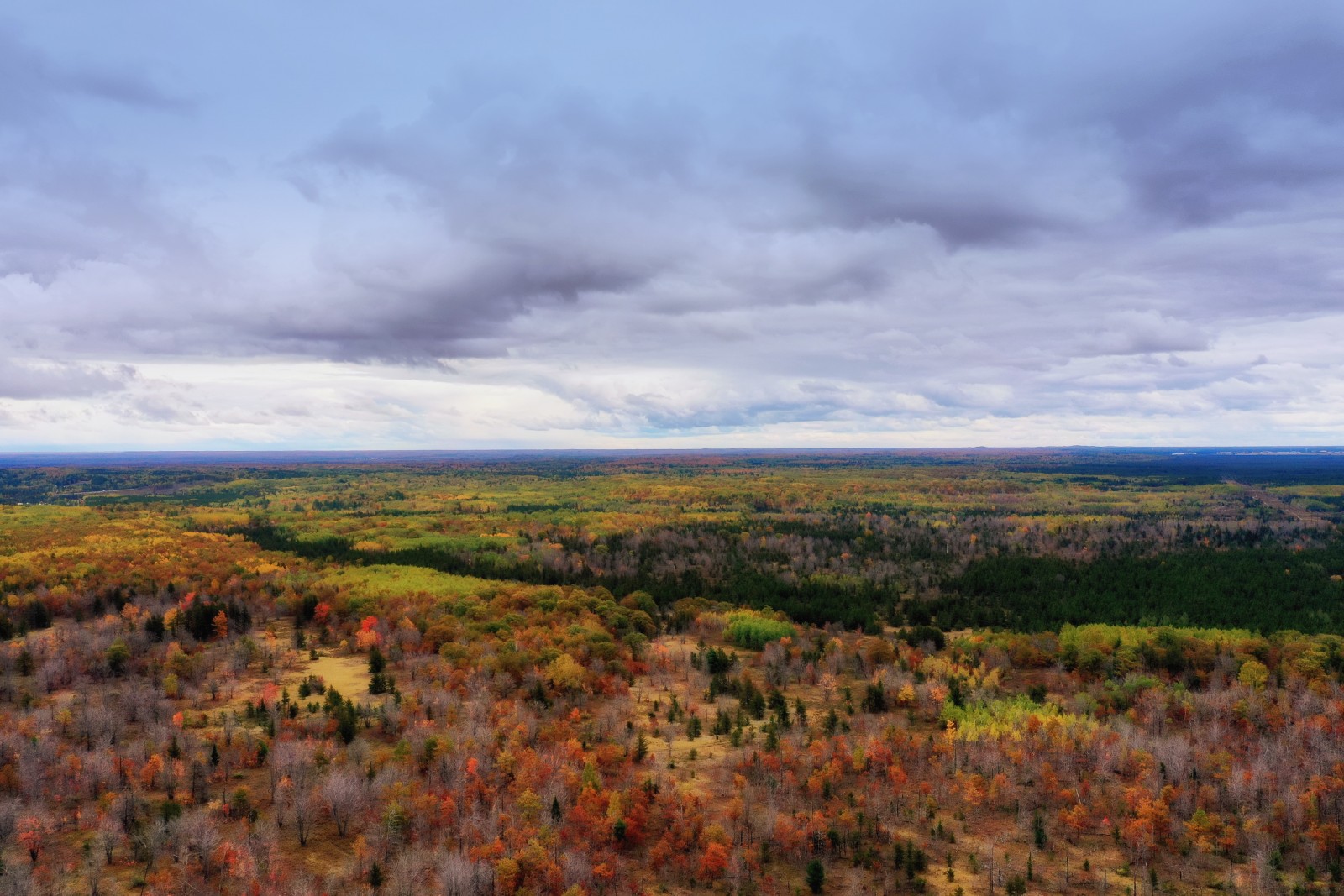
Great Lakes forests, not nearly as vulnerable to wildfire, are the foundation of a $100 billion annual recreation, manufacturing, and real estate economy. They absorb and store carbon, reduce flooding and erosion, keep streams clean, and provide habitat for plants and animals. (Photo Credit: J. Carl Ganter / Circle of Blue)
Still, some of the preparation for projected growth has already started, the result – unanticipated until now – of innumerable projects that respond to rising carbon levels in the atmosphere. Here’s a sampling:
Great Lakes forests are the foundation of a $100 billion annual recreation, manufacturing, and real estate economy that employs hundreds of thousands of workers. The forests absorb and store carbon, reduce flooding and erosion, keep streams clean, and provide habitat for plants and animals. The Northern Institute of Applied Climate Science, a research unit of the U.S. Forest Service, is one of the leading groups that has dispatched teams of forest specialists to build partnerships with businesses and communities, conduct public education workshops, and assist land managers across the eight Great Lakes states in adapting practices that enhance the capacity of forests to thrive in changing conditions.
In response to rain and snowmelt inundating water treatment plants and polluting rivers, Detroit is a leader among American metropolitan areas. Reacting to a lawsuit brought by the Environmental Protection Agency to clean up the Rouge River, Detroit and 47 other cities in three southeast Michigan counties spent $5oo million from 1994 to 2000 to end the combined sewer overflows that poured untreated filth into the river during storms. Since then Detroit has spent $528 million more to build eight retention basins and treatment plants for storing and disinfecting 131 million gallons of stormwater that otherwise would drain into the Rouge and Detroit rivers during heavy rains and snows.
Three years ago, the Detroit Water and Sewerage Department increased drainage fees to raise $150 million to pay for its state-of-the-art stormwater system. The fees were based on a monthly $750 per-acre charge on impermeable surfaces for Detroit properties. Up to 80 percent discounts were offered, in particular for parking lot owners and manufacturers who reduce or eliminate storm water flowing off their property.
Those offers spurred myriad innovations in the city. For instance, Chip Letts, chief executive of Letts Industries, a Detroit-based auto parts manufacturer, installed a $1 million green roof and ground level rain garden at the company’s 70,000 square-foot building on Bellevue Street. Letts received a $50,000 grant from the city to help pay for the roof and garden.
He receives an 80 percent discount on his drainage fees for the 104-year-old building that he’s renovating into spaces for offices and workshops. The green roof and rain garden, viewed as attractive amenities, have raised the occupancy rate of Letts’ new Beltline Center to over 70 percent. “It’s all working well,” he said in an interview. “I’m happy.”
In September, Michigan Gov. Gretchen Whitmer issued an executive order that called for cutting emissions 28 percent compared with 1990 levels by 2025, and set 2050 as the deadline for the state to reach carbon neutrality. Michigan’s conservative legislature could be an impediment to achieving those goals, but the state is clearly moving in that direction.
Almost a fifth of Michigan’s electrical generating capacity comes from renewable sources, according to the Michigan Public Service Commission; a decade ago it was under four percent.

In September, Michigan Gov. Gretchen Whitmer issued an executive order that called for cutting emissions 28 percent by 2025 compared with 1990 levels. She set 2050 as the deadline for the state to reach carbon neutrality. This Presque Isle power plant no longer operates. (Photo Credit: J. Carl Ganter / Circle of Blue)
Similarly, Michigan’s big electric utilities, for decades the largest carbon producers and water users, are steadily making the transition to reduce both. As recently as 2010, 27 coal-fired power stations operated in Michigan; now there are 12.
Consumers Energy, Michigan’s largest utility, announced three years ago that it would close its coal-fired plants by 2040. DTE Energy, the second largest utility, announced it will be carbon neutral by 2050, a target that could be met earlier, said Greg Ryan, the company’s manager of environmental sustainability and climate change. “Carbon reduction is a primary goal,” he said. “We’re getting there as fast as we can.”
Whether they are big or small, climate-related responses are complex, expensive, and take years to complete. The Detroit stormwater drainage network started in 1977 with a federal order, took four decades to build, and cost over $1 billion. This massive project also did nothing to improve the D+ grade that The American Society of Civil Engineers awarded Michigan in 2018 for the condition of its infrastructure.
Smaller projects are hardly easier. High water levels and less ice on Lake Superior, for example, produced huge winter waves that steadily turned 1-mile-long Lakeshore Boulevard in Marquette to rubble. Fixing the damage involved moving the road 300 feet inland and converting more than 30 acres of city-owned property into a natural buffer zone and public park to absorb the lake’s energy.
Sounds like a readily achievable solution. In concept it was. In practice it was not, according to Tyler Penrod of Superior Watershed Partnership, a Marquette-based conservation group that helped lead the project. The new road was built last year. Next summer the shoreline buffer and park will be planted in native species of grass and trees. The $12 million project took 12 years of public discussion, community meeting, engineering, design, fundraising, and construction to complete.
The Marquette project is a distillation of the need to unsnarl the process for updates required to respond to climate change in the Great Lakes states. Beth Gibbons and her ASAP colleagues have set out to use climate science to help answer another riddle about human migration to the region.
Mother Earth is not waiting. She is pushing back hard with heat, fires, hurricanes, droughts, floods, tornados, earthquakes and plagues. If anything is true about the hotter, harder, illogical and alarming era that we’ve entered it’s this: climate disruption will force the Great Lakes states to scrub clean the rusted parts, and add innumerable new ones to the regional workbench of governance and management.
Catch more news about climate change impacts on Great Lakes Now:
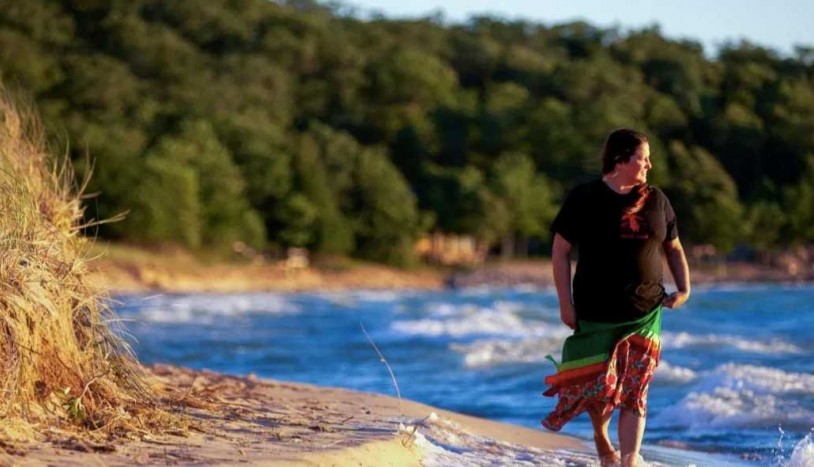
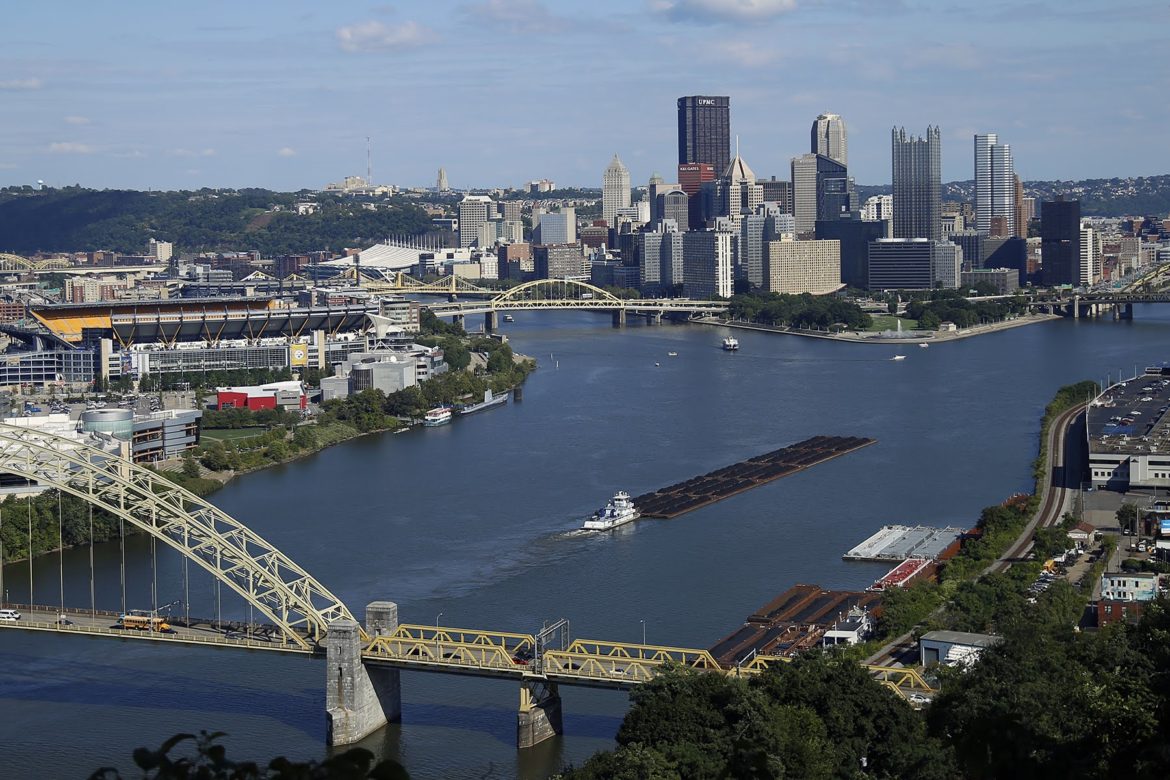
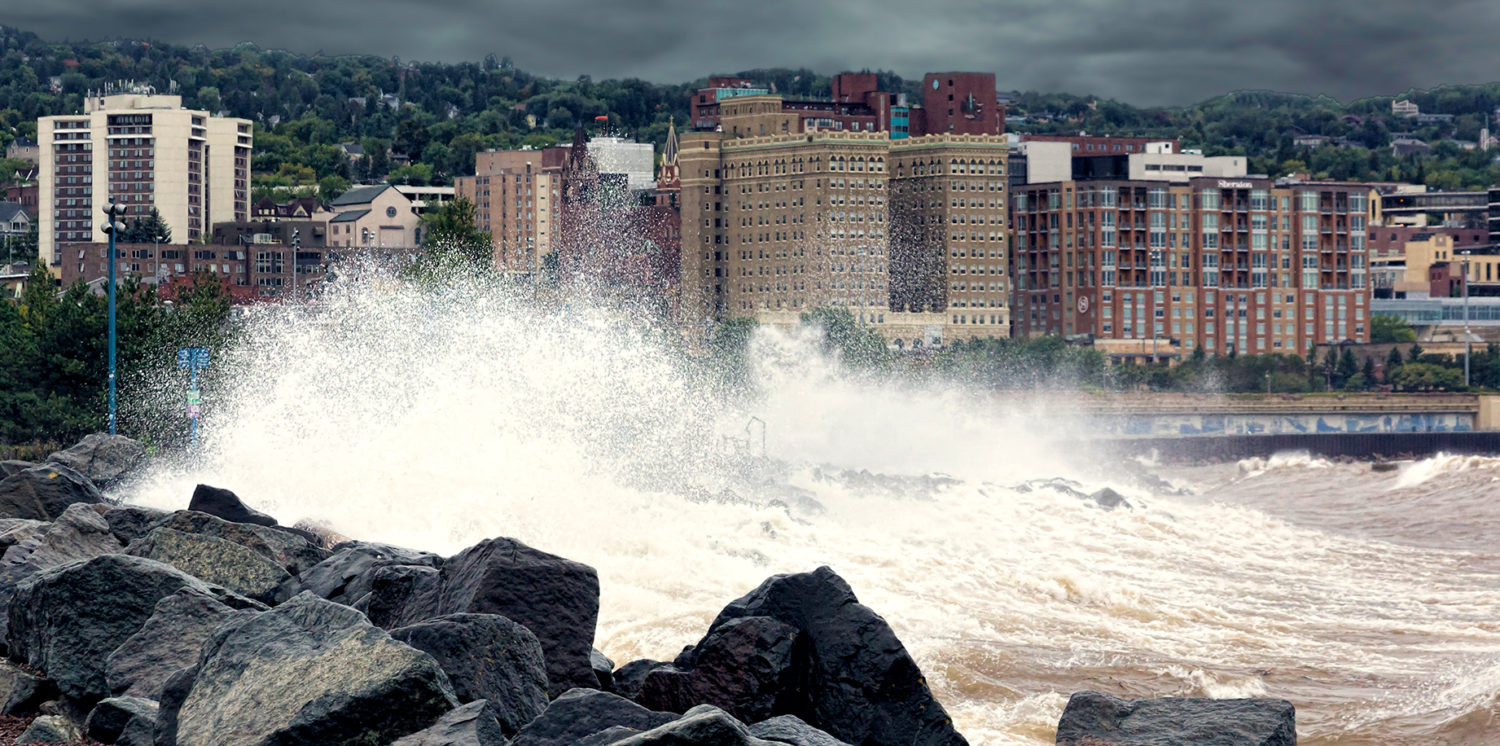
Featured image: Warming winters, ample reserves of fresh water, and forests not prone to wildfire are ecological benefits that could attract millions of new residents to the Great Lakes and reverse decades of slow population growth. (Photo Credit: J. Carl Ganter / Circle of Blue)





